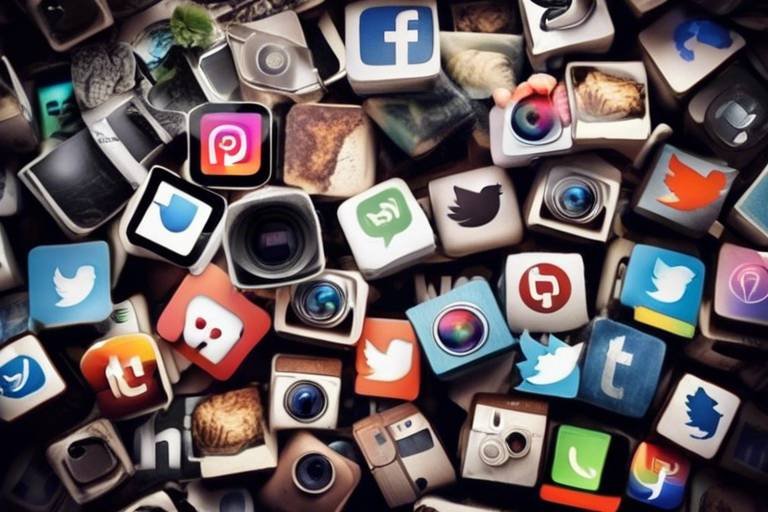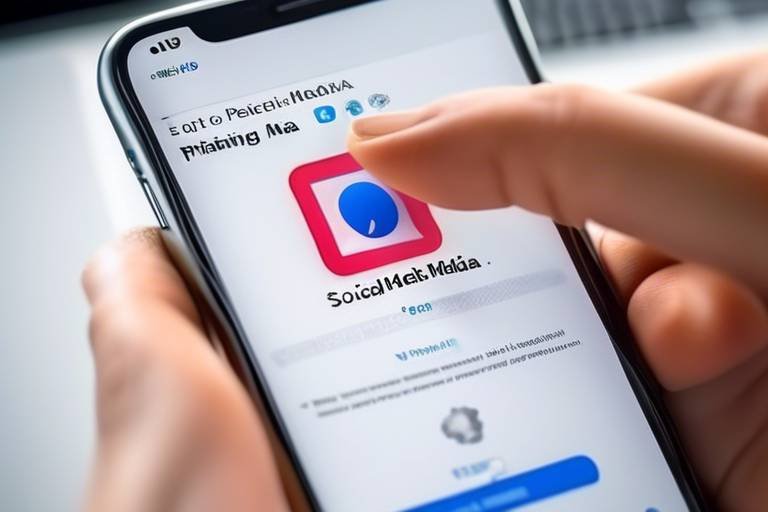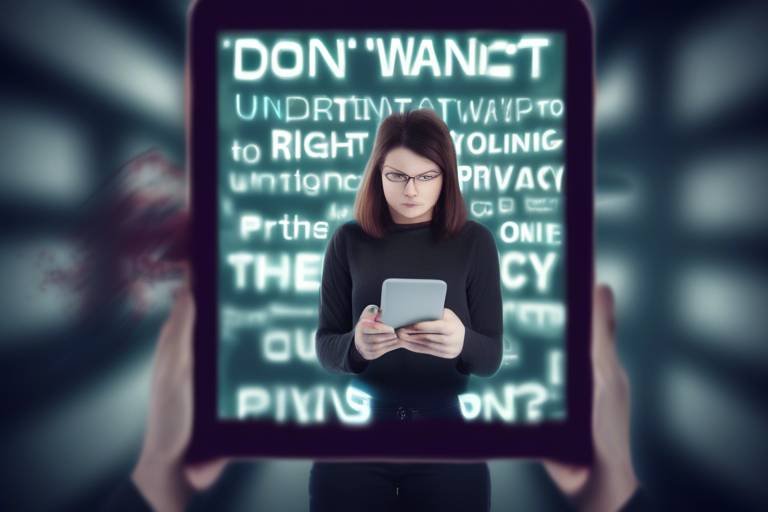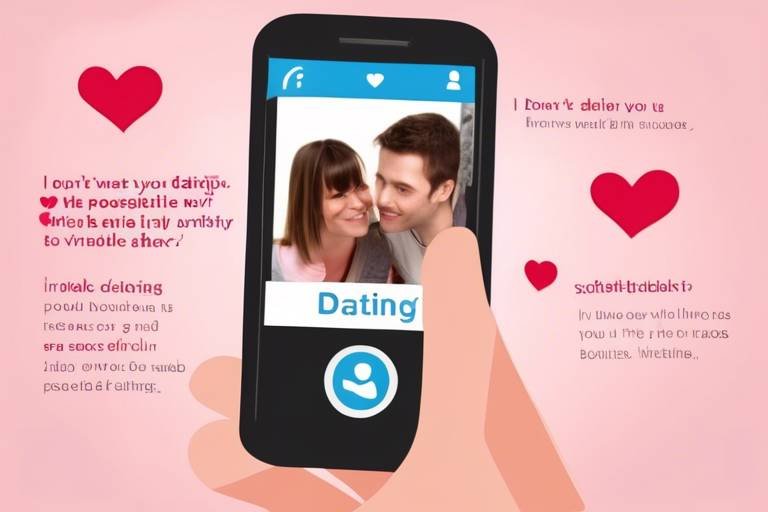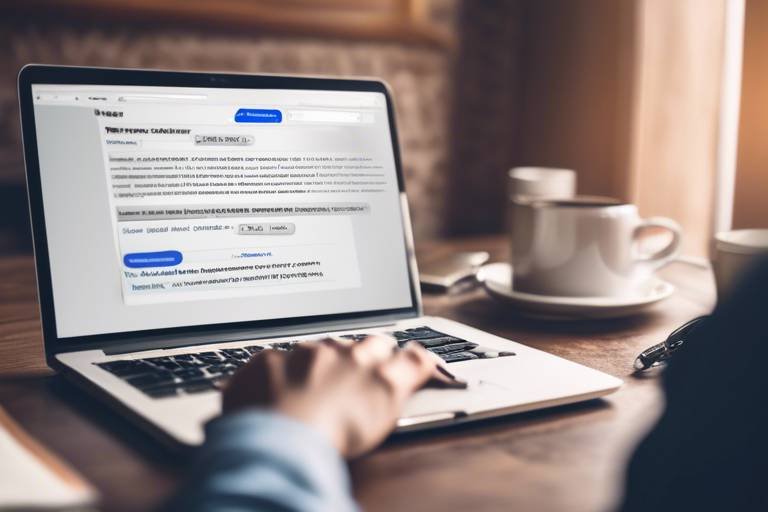Steps to Take if Your Social Media Account is Hacked
In today's digital world, social media accounts are not just platforms for sharing photos or connecting with friends; they house our personal information, memories, and sometimes even sensitive data. So, when you discover that your social media account has been hacked, it can feel like a punch to the gut. But fear not! There are essential steps you can take to regain control and protect your personal information from further threats. In this article, we will guide you through the necessary actions to secure your account and prevent future breaches.
Understanding the indicators of a hacked social media account is crucial. Imagine waking up to find messages in your inbox that you didn’t send or seeing posts on your wall that you didn’t create. These are just a few of the common signs that your account may have been compromised. Other indicators include:
- Unusual activity, such as friend requests sent to people you don’t know.
- Unexpected password changes that you didn’t initiate.
- Notifications about logins from devices or locations that you don’t recognize.
If you notice any of these signs, it’s time to take action!
Taking swift action can help mitigate damage. The first thing you should do is change your password. A strong, unique password is your first line of defense. It’s like locking your front door; if the lock is weak, anyone can get in. Here’s how to create a secure password:
When updating your password, it’s essential to choose something that is hard to guess. Avoid using easily guessable information such as birthdays or common words. Instead, consider utilizing a combination of upper and lowercase letters, numbers, and symbols. For example, instead of "password123," you could use "P@ssW0rd!2023". This makes it significantly harder for hackers to crack your code.
To enhance your password security, remember these best practices:
- Use at least 12 characters.
- Incorporate a mix of letters, numbers, and symbols.
- Avoid using the same password across multiple accounts.
Consider using a password manager to help generate and store complex passwords securely. This tool not only simplifies the process of remembering passwords but also reduces the likelihood of using the same password across multiple accounts. Think of it as a safe where you keep all your valuable keys; it keeps them organized and secure.
Two-factor authentication (2FA) adds an extra layer of security to your social media accounts. It’s like having a second lock on your door. Even if someone manages to get your password, they won’t be able to access your account without the second form of verification. Enabling 2FA is typically straightforward. You can usually find the option in your account settings under security. Once activated, you’ll receive a code via SMS or an authentication app every time you log in from an unrecognized device.
If your account is still accessible but compromised, follow the recovery procedures provided by the platform. Most social media sites have a process in place to help you regain control. This often involves verifying your identity through email or phone. Don’t hesitate to take advantage of these recovery options; they are designed to help you!
Reaching out to social media customer support can expedite recovery. When contacting them, be clear and concise about your issue. Provide them with as much information as possible, such as your username, email address associated with the account, and details of the suspicious activity you’ve noticed. This will help them assist you more effectively.
Even after recovery, it’s vital to monitor your account for unusual activity. Regular checks can prevent future incidents. Think of it as regularly checking your bank account for unauthorized transactions. The more vigilant you are, the less likely you are to fall victim to hackers again.
After regaining control, implement preventive measures. Regular password updates are essential, but that’s just the tip of the iceberg. Here are some additional steps you can take:
- Be cautious of suspicious links in messages or emails.
- Educate yourself about online security best practices.
- Keep your software and apps updated to the latest versions.
By being proactive, you can significantly reduce your risk of future hacks.
- What should I do if I can't access my account?
If you can’t access your account, follow the recovery procedures provided by the social media platform. Look for options like "Forgot Password?" or "Need Help?" on the login page. - How can I tell if my account has been hacked?
Look for signs like unusual activity, unexpected password changes, or messages sent without your knowledge. - Is two-factor authentication really necessary?
Absolutely! It adds a crucial layer of security that can protect your account even if your password is compromised.

Recognizing the Signs of a Hacked Account
Understanding the indicators of a hacked social media account is crucial in today’s digital age where our online presence is more vulnerable than ever. Imagine waking up one morning to find your social media account behaving like a rebellious teenager—posting strange messages, sending friend requests to people you don’t know, or even changing your profile picture to something bizarre. This isn’t just a prank; it’s a serious sign that your account may have been compromised.
So, how do you know if your account has been hacked? Here are some common signs to watch out for:
- Unusual Activity: If you notice posts or messages that you didn’t create, it’s a red flag. Hackers often use your account to spam others or promote malicious content.
- Unexpected Password Changes: Did you suddenly find yourself logged out of your account? If you can’t log in and haven’t changed your password, someone else might have taken control.
- Unfamiliar Devices or Locations: Many platforms allow you to see where your account is being accessed from. If you spot logins from devices or locations you don’t recognize, it’s time to take action.
- Friend Requests or Messages You Didn’t Send: If your friends are receiving strange messages from you or if they mention receiving unexpected friend requests, this could indicate your account is being misused.
It’s essential to stay vigilant and regularly check your account activity. Just like you wouldn’t leave your front door wide open, you shouldn’t ignore the signs of a potential security breach. By recognizing these indicators early, you can take the necessary steps to secure your account and protect your personal information from further threats. Remember, acting swiftly can make all the difference in preventing a minor inconvenience from turning into a major headache.

Immediate Actions to Secure Your Account
So, you've just discovered that your social media account has been hacked. Panic sets in, right? But before you let the fear take over, take a deep breath and focus on what you can do immediately to secure your account. The first thing you need to do is change your password. This is your best defense against further unauthorized access. Think of your password as the front door to your digital life—if it’s compromised, it’s time to replace the lock!
To change your password, navigate to your account settings. Look for the security or password section. When creating a new password, make it strong and unique. Avoid using easily guessable information like your pet's name or your birthday. Instead, consider using a combination of uppercase and lowercase letters, numbers, and symbols. For example, instead of "password123," try something like "P@55w0rd!2023." This makes it much harder for hackers to guess.
Changing your password is just the beginning. You should also enable two-factor authentication (2FA) if you haven’t already. This adds an extra layer of security by requiring a second form of verification, usually a code sent to your phone or email, in addition to your password. It’s like having a security guard at your door, making sure that only you can enter your account. To enable 2FA, head back to your account settings and look for the security options. Follow the prompts to set it up—it’s worth the extra effort!
When creating your new password, keep these best practices in mind:
- Length: Aim for at least 12 characters.
- Diversity: Use a mix of letters, numbers, and symbols.
- Unpredictability: Avoid common words or phrases.
If you find it challenging to remember complex passwords, consider using a password manager. These handy tools can generate strong passwords for you and securely store them, so you don’t have to remember every single one. Think of it as a vault for your passwords—safe, secure, and easily accessible when you need them. Popular options include LastPass, 1Password, and Bitwarden.
After updating your password and enabling two-factor authentication, take a moment to review your account settings. Check for any unauthorized changes or unfamiliar devices that may have accessed your account. If you see anything suspicious, remove those devices immediately. This is crucial for ensuring that no one else has access to your account.
Lastly, keep an eye on your account activity. Even after you think you've secured everything, it's wise to monitor for any unusual activity. If you notice anything strange, don’t hesitate to take action. Remember, staying vigilant is key to keeping your social media account safe!
Q: How often should I change my password?
A: It's a good idea to change your password every three to six months, especially if you suspect any unauthorized access.
Q: What if I can't access my email to reset my password?
A: Most platforms offer alternative recovery options, such as answering security questions or sending a code to your phone. Check the platform's help center for specific instructions.
Q: Is two-factor authentication really necessary?
A: Absolutely! Two-factor authentication significantly reduces the risk of unauthorized access, making it a crucial step in securing your account.

Changing Your Password
Changing your password is not just a recommendation; it’s a necessity when you suspect that your social media account has been compromised. Think of your password as the key to your digital front door. If that key gets stolen, you wouldn’t just sit back and hope for the best, right? You’d change the locks immediately! The same principle applies here. When you notice any suspicious activity, acting fast can save you from further headaches.
To effectively change your password, follow these essential steps:
- Log into your account: If you can still access your account, head straight to your account settings.
- Navigate to the password section: Look for the option to change your password, usually found under 'Security' or 'Account Settings.'
- Create a new password: This is where you can flex your creativity! Aim for a password that is not only strong but also unique to your account.
Now, what makes a strong password? It’s all about complexity and unpredictability. Here are some best practices to consider:
- Use a mix of uppercase and lowercase letters.
- Incorporate numbers and special characters (like @, #, $, etc.).
- Avoid using personal information, such as your name or birthdate, which can be easily guessed.
For example, instead of using "JohnDoe123," you could create something like "J0hn!D03@2023!" This new password is much harder to crack and offers better protection. Remember, the longer and more complex your password is, the safer your account will be.
After changing your password, it’s wise to check if you’ve used the same password on other accounts. If so, consider changing those as well. Using a password manager can be a game-changer here, as it allows you to generate and store complex passwords securely without the hassle of remembering each one. This way, you can maintain unique passwords across all your accounts, significantly reducing the risk of a future breach.
In conclusion, changing your password is a critical step in regaining control of your social media account. By taking the time to create a strong, unique password, you’re not just locking the door; you’re reinforcing it with the best security system available. So, don’t delay! Act now and keep your online presence secure.

Best Practices for Password Creation
Creating a strong password is like building a fortress around your online identity. It's your first line of defense against intruders who want to compromise your social media accounts. To craft a password that stands the test of time and potential cyber threats, consider the following best practices:
First and foremost, aim for a password that is at least 12 characters long. The longer your password, the harder it is for hackers to crack it. Combine uppercase letters, lowercase letters, numbers, and symbols to create a complex password that is unique to each account. For instance, instead of using a simple word like "password," you might create something like "P@ssw0rd!2023," which is much harder to guess.
Another key aspect is to avoid using easily guessable information. This includes your name, birthday, or pet's name. Think of your password as a secret code that only you should know. To make it even more secure, consider using a passphrase—a series of random words strung together. For example, "BlueSky!Dancing$Tree7" is not only memorable but also incredibly difficult to crack.
Moreover, it's essential to use different passwords for different accounts. Just like you wouldn't use the same key for your house, car, and office, you shouldn't use the same password across multiple platforms. If one account gets compromised, others will remain secure. A password manager can be a lifesaver here, helping you generate and store complex passwords without the hassle of remembering them all.
Lastly, make it a habit to update your passwords regularly. Think of it as changing the locks on your doors every few months. By refreshing your passwords, you reduce the risk of unauthorized access. Set a reminder to change your passwords every three to six months, and you'll be well on your way to enhancing your online security.
In summary, creating a strong password is a crucial step in protecting your social media accounts. By following these best practices, you can significantly reduce the risk of being hacked and enjoy a more secure online experience.
Q1: How often should I change my passwords?
A1: It's advisable to change your passwords every three to six months to maintain security.
Q2: What is two-factor authentication?
A2: Two-factor authentication is an extra layer of security that requires not only a password but also a second form of verification, such as a text message or an authentication app.
Q3: Can I use the same password for different accounts if I add symbols?
A3: No, it's best to use unique passwords for each account, even if they are modified with symbols. This ensures that if one account is compromised, others remain safe.
Q4: What should I do if I forget my password?
A4: Most platforms have a "forgot password" feature that allows you to reset your password via email or SMS verification.

Using a Password Manager
In today's digital age, where our lives are intertwined with technology, the importance of strong, unique passwords cannot be overstated. This is where a password manager comes into play, acting as your personal vault for all your passwords. Imagine having a trusty sidekick that not only generates complex passwords for you but also remembers them, freeing your mind from the burden of trying to recall every single one. Sounds convenient, right?
Password managers are designed to simplify your online security. They store your passwords in an encrypted format, meaning that even if someone gets access to the manager, they won't be able to read your passwords. This is a huge leap forward in protecting your sensitive information. Rather than using the same password across multiple sites—an easy target for hackers—you can create unique passwords for each account without the hassle of remembering them all.
To give you a clearer picture, here’s how a password manager can enhance your security:
- Complex Password Generation: Most password managers come with built-in generators that create strong passwords using a mix of letters, numbers, and symbols. This makes it almost impossible for anyone to guess your passwords.
- Automatic Form Filling: They can automatically fill in your login credentials on websites, reducing the chance of falling for phishing attempts where you might accidentally enter your details on a fraudulent site.
- Cross-Device Synchronization: Whether you're on your phone, tablet, or computer, a good password manager will keep your passwords updated and accessible across all devices.
When choosing a password manager, consider the following factors:
| Feature | Importance |
|---|---|
| Encryption Standards | High |
| User Interface | Medium |
| Cross-Platform Compatibility | High |
| Customer Support | Medium |
By investing in a password manager, you're not just making your life easier; you're also taking a significant step towards enhancing your online security. So, why take the risk of using weak or reused passwords when you can have a reliable tool at your disposal? In the end, a password manager is more than just a convenience—it's a necessity in the fight against cyber threats.

Enabling Two-Factor Authentication
In today's digital age, security is more important than ever, especially when it comes to your social media accounts. One of the most effective ways to enhance your account's security is by enabling Two-Factor Authentication (2FA). This additional layer of protection requires not only your password but also a second piece of information to verify your identity. Imagine it like having a double lock on your front door: just because someone has the key (your password) doesn’t mean they can easily get in.
So, how do you enable this crucial feature? The process is relatively straightforward, but it can vary slightly depending on the platform. Typically, you can find the option to enable 2FA in your account settings under Security or Privacy. Here's a quick overview of the steps you might follow:
- Log into your social media account.
- Navigate to the account settings.
- Look for security settings.
- Select the option for Two-Factor Authentication.
- Choose your preferred method for receiving the second factor (e.g., SMS, authentication app, or email).
- Follow the prompts to complete the setup.
It's essential to choose a method that you find convenient and secure. For instance, using an authentication app like Google Authenticator or Authy is often recommended over SMS since it's less susceptible to interception. Once you’ve set it up, you’ll be prompted to enter a code sent to your chosen method whenever you log in from an unrecognized device. This means that even if someone manages to steal your password, they still won’t have access to your account without that second piece of information.
Moreover, enabling 2FA not only protects your account but also gives you peace of mind. It's like having a personal bodyguard for your online presence. Remember, the goal is to make it as difficult as possible for unauthorized users to gain access to your information. So, don’t wait until it’s too late; take this simple step to bolster your security today!
Here are some common questions regarding Two-Factor Authentication:
| Question | Answer |
|---|---|
| What if I lose my phone? | Most platforms provide backup codes during the setup process. Store these codes securely, as they can help you regain access if you lose your device. |
| Can I use 2FA on multiple devices? | Yes! You can set up 2FA on multiple devices, ensuring that you can receive codes wherever you are. |
| Is Two-Factor Authentication foolproof? | While 2FA significantly increases security, no system is completely immune to hacking. Always stay vigilant and monitor your accounts regularly. |

Recovering Your Account
So, you've realized that your social media account is compromised, and you're probably feeling a mix of panic and frustration. But don't worry; recovering your account is entirely possible! The first step is to follow the recovery procedures provided by the social media platform. Most platforms have dedicated processes to help you regain access, and they usually involve verifying your identity. This can often be done through your registered email or phone number.
When you initiate the recovery process, it’s essential to act quickly. The longer you wait, the more time a hacker has to wreak havoc on your account. Most platforms will guide you through a series of steps, which may include:
- Verifying your identity through a confirmation code sent to your email or phone.
- Answering security questions that you set up when you created your account.
- Providing information about your account activity to prove ownership.
After you've followed the necessary steps, you might receive a temporary password or a link to reset your password. It's crucial to create a new password that is strong and unique, as this will prevent the hacker from regaining access. Remember, a good password is like a sturdy lock on your front door—it keeps unwanted guests out!
If you find that the recovery options are not working or you don't have access to the email or phone number linked to your account, don’t hesitate to reach out to customer support. They can often assist you in verifying your identity through alternative means. When contacting customer support, be clear and concise about your issue. Provide them with as much information as possible, such as:
- Your username or profile link.
- The last time you were able to access your account.
- Any suspicious activity you noticed.
Once you regain access, it’s vital to monitor your account activity regularly. Keep an eye out for any unusual posts or messages that you didn't send. This vigilance can help you catch any lingering issues before they escalate. Think of it as keeping an eye on your garden; regular checks can prevent weeds from taking over!
In summary, recovering your social media account is a multi-step process that requires prompt action and attention to detail. By following the recovery procedures, reaching out to customer support if needed, and monitoring your account afterward, you can reclaim your digital space and protect it from future threats.
Q: What should I do if I can't access my recovery email?
A: If you can't access your recovery email, try to use any alternative recovery options provided by the platform, such as answering security questions or using a backup email. If those fail, contact customer support for assistance.
Q: How long does it usually take to recover a hacked account?
A: The recovery time can vary depending on the platform and the complexity of your case. Generally, if you follow the recovery steps promptly, you can regain access within a few hours to a couple of days.
Q: Can a hacker still access my account after I've recovered it?
A: If you change your password and enable two-factor authentication after recovering your account, the hacker should no longer have access. However, it's essential to monitor your account closely for any suspicious activity.

Contacting Customer Support
When you find yourself in the unfortunate situation of having your social media account hacked, one of the quickest routes to recovery is by contacting customer support. But how do you go about this? First off, it's essential to gather all relevant information before reaching out. This includes your account details, any suspicious activities you’ve noticed, and any messages or notifications that raised alarms. The more information you provide, the easier it will be for the support team to assist you.
Most social media platforms have specific channels for reporting hacked accounts. Typically, you can find these options in the help or support section of their website. For example, platforms like Facebook, Twitter, and Instagram have dedicated forms where you can report your issue directly. Make sure to choose the option that best describes your situation, as this will ensure your request is routed to the right team.
When crafting your message to customer support, be as clear and concise as possible. Here’s a quick checklist of what to include:
- Your account username or email associated with the account.
- A detailed description of the issue, including any actions taken by the hacker.
- Any attempts you’ve made to recover the account yourself.
- Contact information for any follow-up, if necessary.
Remember, customer support representatives are there to help you, but they handle numerous requests daily. A well-structured message can make a significant difference in how quickly you receive assistance. After sending your request, keep an eye on your email for any responses, and be sure to check your spam folder just in case.
In addition to direct contact, many platforms offer community forums where users share their experiences and solutions. Engaging in these forums can provide you with additional insights and tips on how to expedite your recovery process.
Lastly, patience is key. While it can be frustrating to wait for a response, most social media platforms are aware of the urgency surrounding hacked accounts and aim to resolve such issues as quickly as possible. Keeping your communication polite and respectful can also go a long way in fostering a positive interaction with customer support.
Here are some common questions people often have when dealing with hacked social media accounts:
- How long does it take to recover a hacked account? - Recovery times can vary based on the platform and the complexity of the issue. Generally, it can take anywhere from a few hours to several days.
- What if I can’t access my email linked to the account? - Most platforms allow alternative recovery methods, such as phone verification. Be sure to mention this when contacting support.
- Can I prevent my account from being hacked again? - Yes! Regularly updating your password, enabling two-factor authentication, and being cautious of suspicious links can significantly reduce the risk.

Monitoring Account Activity
Once you've regained access to your social media account, it's crucial to stay vigilant. Monitoring your account activity is like keeping an eye on your home after a break-in; you want to ensure everything is as it should be. The digital world is full of sneaky tactics, and hackers often try to regain access even after you've changed your password. So, what should you be looking for? Well, start by checking for any unusual login locations or devices. Most social media platforms provide a feature that allows you to see where your account has been accessed from. If you notice any unfamiliar locations, it's a red flag that someone might still be lurking around your account.
In addition to monitoring login activity, keep an eye on your messages and posts. Hackers might send messages to your contacts or post content without your knowledge. Imagine waking up to find your account promoting a product you’ve never heard of! That's why it's essential to periodically scroll through your sent messages and recent posts. If you spot anything suspicious, report it immediately.
Another important aspect of monitoring is checking your account settings. Sometimes, hackers can change your email address or phone number associated with your account, making it harder for you to regain access if needed. Regularly verify that your contact information is correct and that no unauthorized changes have been made. You might also want to review the list of apps and services that are linked to your account. If you see anything that looks unfamiliar, it’s time to revoke access.
To make this process easier, consider setting up alerts for any significant changes to your account. Many social media platforms allow you to receive notifications for logins from new devices or changes to your account settings. This proactive approach can help you catch suspicious activity before it escalates. Remember, the more informed you are about your account's activity, the better prepared you'll be to defend against future threats.
In summary, monitoring your account activity is an ongoing process. It requires diligence and a keen eye for detail. Just like you wouldn't ignore a strange noise in your house, don’t ignore unusual activities in your social media accounts. Stay alert, and you’ll be one step ahead of potential threats!
- How can I tell if my account has been hacked? Look for unusual activity, such as messages sent without your knowledge or changes to your profile that you didn't make.
- What should I do if I can’t access my account? Follow the recovery procedures provided by the social media platform, which usually involve verifying your identity.
- Is two-factor authentication necessary? Yes, it adds an extra layer of security and is highly recommended to protect your account.
- How often should I change my password? It's a good practice to change your password every few months or immediately after any suspicious activity.

Preventing Future Hacks
Once you've successfully regained control of your social media account, the next step is to ensure it remains secure. Think of your online presence as a house; once a burglar has broken in, it’s crucial to not only fix the damage but also to reinforce the locks and security systems to prevent future break-ins. Here are some effective strategies to keep your social media accounts safe:
First and foremost, regularly updating your passwords is a vital practice. It’s like changing the locks on your doors every few months; it might seem tedious, but it’s worth the peace of mind. Aim to change your passwords every three to six months, and always use a strong, unique password for each of your accounts. This way, even if one account gets compromised, the others remain secure. To help you create robust passwords, consider using a combination of uppercase letters, lowercase letters, numbers, and symbols. For example, instead of using "password123," you could create something like "P@ssw0rd!2023!" which is far more secure.
Another essential step is to be cautious about suspicious links and messages. Cybercriminals often use phishing techniques to trick users into revealing their passwords or personal information. Always think twice before clicking on links, especially if they come from unknown sources or look suspicious. If a message claims to be from a friend but seems out of character, reach out to them directly to confirm whether they sent it. It’s similar to receiving a letter in the mail that looks like it’s from a bank; you wouldn’t just open it without checking its authenticity, right?
Additionally, educating yourself about online security best practices is crucial. Knowledge is power, and understanding the latest trends in cybersecurity can help you stay one step ahead of potential threats. Follow reputable tech blogs, attend webinars, or even take online courses about digital security. The more you know, the better equipped you are to protect yourself. Remember, just as you wouldn’t drive a car without knowing the rules of the road, you shouldn’t navigate the vast world of social media without understanding how to safeguard your information.
Lastly, consider using a password manager. These tools can help you generate and store complex passwords securely, making it easier to maintain unique passwords for all your accounts without the need to remember each one. Think of a password manager as a digital vault where you can keep all your keys safe and sound. With a password manager, you can also set reminders to update your passwords regularly, ensuring that your account remains fortified against potential breaches.
In conclusion, preventing future hacks is all about being proactive. By regularly updating your passwords, being cautious of suspicious links, educating yourself on security practices, and utilizing password managers, you can significantly reduce the risk of your social media accounts being compromised again. Just like maintaining a healthy lifestyle requires continuous effort, so does protecting your online presence. Stay vigilant, and keep your digital life secure!
- How often should I change my passwords? It’s recommended to change your passwords every three to six months to enhance security.
- What should I do if I receive a suspicious message? Always verify with the sender directly before clicking any links or providing information.
- Are password managers safe to use? Yes, reputable password managers use strong encryption to keep your passwords secure.
- Can I recover my account if it gets hacked again? Yes, most social media platforms have recovery procedures in place, but prevention is key!
Frequently Asked Questions
- What should I do first if I suspect my account has been hacked?
If you suspect your social media account has been hacked, the first step is to change your password immediately. This can help prevent further unauthorized access. Additionally, enable two-factor authentication if you haven't already, as it adds an extra layer of security.
- How can I tell if my account has been hacked?
There are several signs that may indicate your account has been hacked. Look out for unusual activity, such as messages sent without your knowledge, changes to your profile that you didn't make, or friends receiving strange messages from your account. If you notice any of these signs, act quickly!
- What is two-factor authentication and why is it important?
Two-factor authentication (2FA) is a security process that requires two forms of identification before granting access to your account. It typically involves something you know (like your password) and something you have (like a code sent to your phone). This makes it much harder for hackers to gain access, even if they have your password.
- Can I recover my hacked account?
Yes, most social media platforms provide recovery options if your account has been compromised. You may need to verify your identity through your email or phone number. Follow the recovery procedures outlined by the platform to regain access to your account.
- What steps can I take to prevent my account from being hacked in the future?
To prevent future hacks, regularly update your passwords and ensure they are strong and unique. Be cautious of suspicious links and messages, and educate yourself on online security best practices. Utilizing a password manager can also help you maintain secure passwords across different accounts.
- Should I contact customer support if my account is hacked?
Absolutely! Reaching out to customer support can expedite the recovery process. Be clear and concise when explaining your issue, and provide any necessary information they may need to assist you effectively.
- How often should I monitor my account for unusual activity?
It's a good idea to monitor your account regularly, ideally on a weekly basis. Keeping an eye on your account activity can help you catch any unauthorized access early and take action before any damage is done.





